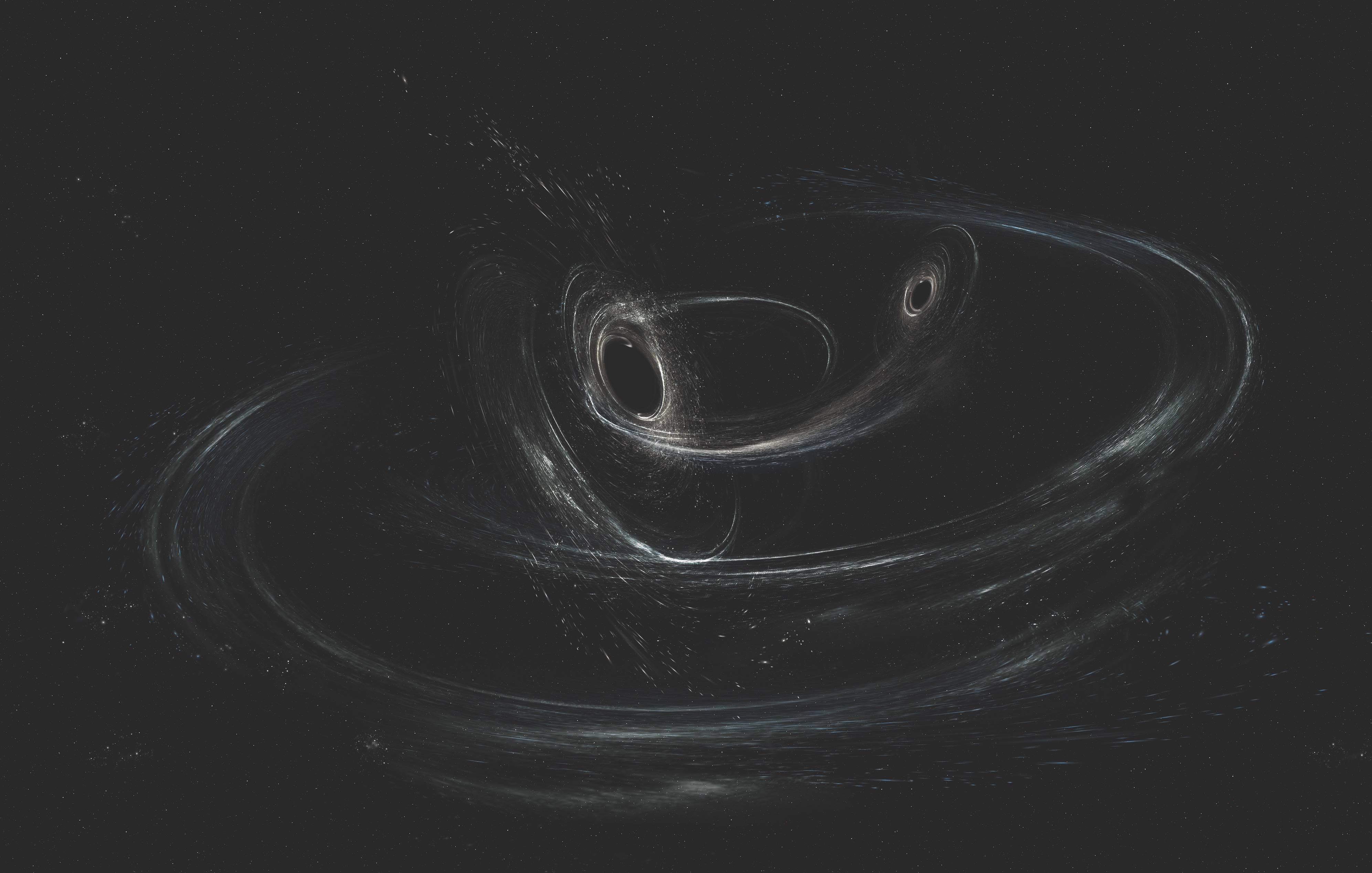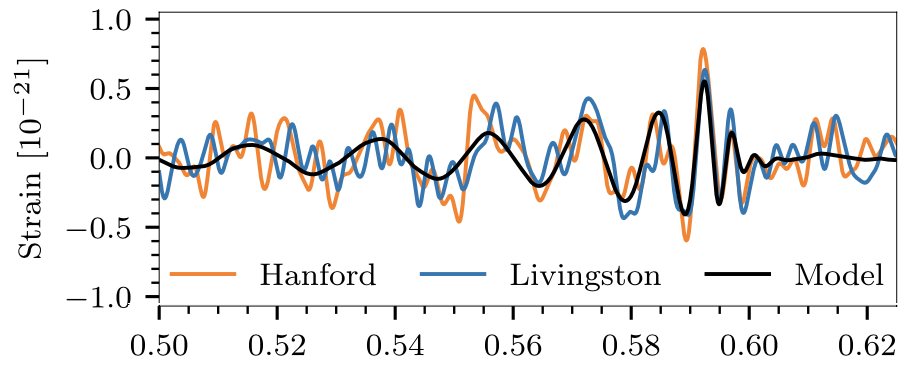LIGO spots a third black hole merger, tightens mass limits on gravitonsThe merger also hints about the history of the black holes.
arsTechnica
John Timmer - 6/1/2017, 11:00 AM
 LIGO/Caltech/MIT/Sonoma State (Aurore Simonnet)
LIGO/Caltech/MIT/Sonoma State (Aurore Simonnet)Today, the team behind the Laser Interferometer Gravitational-Wave Observatory (LIGO) is announcing the detection of a third black hole merger, the first from its second operational run. The merger shares some features with the previous ones: the black holes were bigger than expected, and their merger released a staggering amount of energy. But the LIGO team was also able to extract some information about the details of the collision and propagation of gravitational waves. These details tell us something about the limits of general relativity and the history of the black holes themselves.
Boom
As with the earlier detections, the new event (GW170104) showed up as a series of curves that came to briefly dominate the noise in LIGO's two detectors for a few seconds before fading back into the background. Normally, an event like this would trigger an alert to the astronomy community, which could then attempt observations in the area of the sky where the event took place. But, in this case, a recent period of maintenance had left one of the two detectors set in a calibration mode.
So, instead, the event was picked up by software triggers that scan the incoming data in near-real time. The operators then sent out an alert manually; about 30 groups of astronomers searched the appropriate areas of the sky, but there's no word yet on whether anything came out of those searches.
Meanwhile, the LIGO team analyzed the data, determining that the signal was legit. A comparison with the normal background noise of the detector suggests that a signal like this will only show up at random about once every 70,000 years. A separate, independent analysis placed the false alarm rate at once every 20,000 years. Either of those is enough to consider this a discovery.
The LIGO team has done extensive modeling of different mergers and can match the curves in the data to the properties of the black holes in various models. This lets them determine (within errors) the properties of the collision. In this case, it took place between black holes with masses of roughly 31.2 times that of the Sun and 19.4 times that of the Sun. The black hole that resulted from the merger had a mass of 48.7 times that of the Sun. In terms of mass, that places this event in the middle of the two mergers that were identified during LIGO's previous run.

Those of you who are quick with math will recognize that leaves two solar masses of material missing that was converted into energy and radiated away in the form of gravitational waves during the merger. For a brief moment, the collision radiated away 1056 ergs a second (or 1034 megatons). That's enough to let us notice it, even though it was three billion light years away, the farthest event yet detected through gravitational waves.
That distance, and some details in the shape of the curves, also tell us a lot about these black holes and the Universe as a whole.
The analysis
In a press call announcing the discovery, Laura Cadonati, of Georgia Tech, talked about the black holes' spin. Just like the Earth, the black holes can spin on their axis even as they orbit each other. And, if they're spinning in the same direction as their orbit, Cadonati said they'd have to shed a bit of this rotational energy before they could merge. That shedding takes some time (even if only a fraction of a second) and will prolong the merger slightly. "This means they take longer to merge than if the spins are non-aligned," she said. "We did not see this so-called 'hangup' effect in our data."
While the data isn't detailed enough to rule this effect out, it's more likely that the black holes were rotating in a plane other than that of their orbit.
That's significant, because it tells us about their history. If the two black holes had formed from stars that were part of a binary system, everything—both spins, the orbit—should all be in the same plane, since they're all inherited from the disk of material that formed the stars. Since they're not aligned, it suggests that the black holes formed separately and then came to orbit each other later. And that implies that they are more likely to have formed in a dense cluster of stars and were brought together through their interactions with other bodies in that cluster.
The distance to GW170104 is also twice that of LIGO's first discovery, meaning that the gravitational waves have been traveling for quite a bit longer. That, according to Penn State's B. S. Sathyaprakash, gives them time to interact with the fabric of space in ways that test general relativity.
According to relativity, all frequencies of gravitational waves should travel at the same speed. But in some proposed refinements of the theory, different frequency waves travel at slightly different speeds—Sathyaprakash compared it to how different colors of light travel through glass at different speeds, allowing prisms to separate light. And, if that's the case, LIGO would detect certain changes in the arrival time of waves generated as the black holes spiraled inward. And it doesn't. "We did not discover any dispersion," Sathyaprakash said, "once again failing to prove that Einstein was wrong."
Any dispersion would also imply that the graviton, a theoretical particle that mediates gravitational attraction, would have mass. With no sign of dispersion, the LIGO team can say that if gravitons exist and have mass, it has to be less than 7.7 x 10-23 electronVolts. "To put a number on it, our limit on the mass of the graviton is 30 percent tighter than we had in the past," said Cadonati.
More to come
In the gap between LIGO's first run and its second, the team took the opportunity to perform a few upgrades. Michael Landry, of Caltech, said that at the Livingston facility in Louisiana, they identified some hardware that was scattering some of the laser light back into the detector, creating a source of noise. Those problems were addressed during the downtime, while the laser at the Hanford site in Washington was upgraded to a more powerful version.
The current data gathering run will go until August, and there's the expectation that the European VIRGO detector will join it in taking data before the summer is over. With three detectors, we'll get much better placement of the events that generated them. And, once LIGO is down at the end of the summer, plans include further work on scattering and increasing laser power, along with the possibility of new mirrors and a better control system.
And, with three mergers now detected, researchers are starting to gain confidence that there will be a lot to see. "After this detection, our estimation of the rate at which black holes merge within LIGO's observable volume is about the same as before," Sathyaprakash said. "This means that we should expect to see one binary black hole merger event per day once LIGO's design sensitivity is reached."
If neutron star mergers are happening at an appreciable rate, we should also be able to detect them (and, since they're not black holes, we should also see a signal of the event with photons). And new LIGO lead Dave Shoemaker said that he's still dreaming of seeing something new: "I would like to see in all three detectors, the two LIGO and the VIRGO detectors, signals which arrive within the time window that says they came from the same source. I want to see those three signals to be consistent, maybe looking identical, maybe looking similar. And I want it to be a signal that no one has predicted, and for which no one has an explanation."
https://arstechnica.com/science/2017/06/ligo-spots-a-third-black-hole-merger-tightens-mass-limits-on-gravitons/